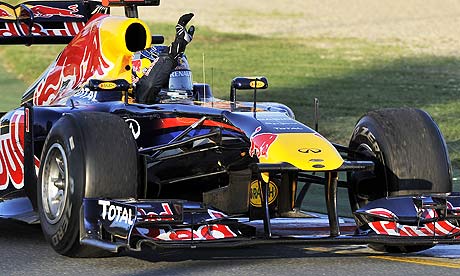Lost in Translation?
Iain Taker is an associate lawyer at Kemp Little LLP (iain.taker@kemplittle.com), specialising in commercial contracts, social media and sports law, and is a registered lawyer under the FA Football Agency Regulations. You can follow him on twitter @iaintaker or on LinkedIn
The digital age offers a previously unparalleled opportunity for sports teams to access current and potential fans both in local and international markets. The prospect of accessing vast numbers of fans across geographical and cultural borders will appeal greatly to many sports teams from both a marketing and financial perspective. However, there are important areas that need to be considered prior to making any decision whether or not to provide localised digital content.
So what is localisation of digital content?
In a world where teams’ internet pages are accessed by fans who are not necessarily fluent in English, there is an increasing expectation that digital content should be provided in a number of languages. The increase in the localisation of digital content has stemmed from an increased acceptance of using computers as a first point of reference for locating information and services (e.g. purchase of merchandise). A multilingual website is one that offers the same content in more than one language, e.g. FC Barcelona offer their website (in the same format) in 6 languages (English, Catalan, Spanish, Arabic, Japanese and Chinese). A multi-regional or localised website is one where content is directed towards fans in that location. It is possible to have a hybrid of both multilingual and localised digital content where some ‘general’ content is translated and other ‘bespoke’ content is localised. Such a setup is likely to be used by teams who will have a mix of content suitable for all locations and targeted/focussed content more relevant to specific locations.
Localisation in its simplest form is the modification of digital content in order to provide the fan with an accessible, culturally sensitive and usable offering. The process itself may not, however, be quite as simple as engaging programming and legal expertise. Where problems have occurred with teams localised content, it more often than not results from a lack of focus on linguistic and cultural requirements.
1. Names
It is therefore important to understand whether the names used on the site are suitable to be (the main brand is unlikely to be able to be changed but sections on the website for example may be) used. Examples of where names have used without checking their local meaning include General Motors’ launch of its Nova car in Central and South America where “no va” translated as “does not go”. Audi suffered a similar issue with its E-Tron car in France where “étron” translates as excrement. These examples illustrate the importance of checking not only the name being used itself but also any similar variants of the name.
2. Language
The choice and style of language used for the content is of key importance to the user. Firstly, the intended target market needs to be identified and classified in order to select the most appropriate language(s) in which to provide the localised content. For example, where the content is to be targeted at all Arabic speakers then the default language should be Modern Standard Arabic, with the fan being given an option to amend the default language if they wish. Where such alternative language options are available, it is important to make it readily apparent to the fan how the default language settings can be changed.
It is necessary to ensure that the actual wording, phrases and sayings on the site used can be directly translated without any cultural insensitivity. For example, where the site uses humour will it be suitable or easily understood? Sports teams do not usually focus their content at businesses and therefore the style of the language used should not be too formal.
3. Pictures, symbols and colours
Any content which is seeking to engage the team’s fans is likely to contain a number of images. While it is important to ensure that the images are authentic (and all relevant rights in the images have been cleared) there should be a review prior to uploading of the images to remove any images which may not be cultural acceptable or otherwise be inappropriate for the target local market. For example, localised content targeted at Arabic fans should not contain images of alcohol or minimally dressed women.
In addition to pictures, symbols can often confusion or potential problems. For example, the use of a house symbol for the home page or a letter for email is the usual standard in Europe and US but these standards do not apply in Asia. The use of particular colours may have different meanings in different locations. For example, white is the colour of mourning in Japan and yellow is the colour of prosperity in India. Given that certain icons may have different meanings, all aspects of localised content should be reviewed prior to their use.
4. Other areas
In addition to those areas mentioned above, a team looking to localise its content should also give consideration as to how they will deal with:
- the site navigation;
- selection of relevant content;
- the target market;
- search engine ranking;
- fan support; and
- potential legal issues (discussed in further detail below).
Although localisation can include considerable expense (both initial and on-going) and effort required the potential benefits and financial rewards of a successful localisation process can significantly outweigh these issues.
Common incorrect assumptions
There a number of common incorrect assumptions that teams who are looking to localise their content should avoid. These include:
1. Correct translation of content results in fan satisfaction
Where the content is not correctly targeted then the achieved level of fan satisfaction will be lower than could have been achieved, if the content was relevant to the target market. For example, a team who is targeting the South American market should tailor the focus of articles/player interviews etc. to players with higher profile in South America. In addition, the content is much more than just the text and must take into account cultural differences for example, areas such as acceptance of pop-ups, use of text heavy or picture heavy displays. Support systems both from a technical perspective and for sales queries must also be provided in the localised language(s) on the website and via trained staff (who should be fluent in the languages offered on the website) and the support should be provided at suitable times in the targeted locations.
2. Third parties such as distributors can run the site on the team’s behalf
Many teams who provide localised content take advantage of the knowledge and capabilities of local third parties (e.g. distribution of merchandise and advice on localisation of content). It is, crucial, however that the team retains overall control of the content (and its appearance). Any problems encountered with the localised content may potentially cause damage to the team’s brand. This is because there may be significant differences in the brand image that is displayed (on the localised site) or in the standard of content or service given to the fans.
3. We can use an employee or machine translation to save costs
Although, an employee who speaks the local language may be able to translate some of the original content, they might not, however be au fait with cultural sensitivities or able to provide a translation at a high enough standard or in the correct tone.
Machine translations are becoming more sophisticated but do not currently offer a viable option as important messages may get ‘lost in translation’. An example of this was highlighted by Globalme Localization Inc’s overview of best practice where they, using a leading machine translation tool, translated the following phrase into Chinese and back again:
“Shipping costs will be noted per item during the checkout process or you may estimate shipping costs from the cart before checkout”.
The result of the re-translation was “Freight will notice that each piece in the checkout process or you may estimate the cost of shipping the vehicle in front checkout”.
Without careful checks it is clear that reliance on machine translation tools might not be suitable as it could result in confusion which may, in turn, cause issues and damage the fan’s opinion of the website.
Legal issues
Once the team has made the commercial decision to provide localised content, there are a number of potential legal issues that must be considered.
1. Local sales laws
Where the team is planning to sell into a new jurisdiction it is vital that they seek local legal advice concerning any applicable sales laws that may affect the fan’s rights and/or the team’s legal liabilities. For example, in the United Kingdom the Distance Selling Regulations entitle the fan to return any product purchased over the Internet within 7 days. In particular, it is necessary to determine the requirements for establishing a contract and whether a valid contract can be formed over the Internet. In a scenario where a third party will be providing services to the team such as being licensed to sell the team’s merchandise it would be necessary to ensure that the local laws are accommodated in the commercial arrangement between the parties.
2. Website terms and conditions
Where the team’s website is localised, the terms and conditions should be localised even if the team is not intending to sell any products. Where the localised content is provided in more than one language, the fan should also have the option of reading the website terms and conditions in all of the available languages. The website terms and conditions should contain provisions to assist the team in preventing unauthorised:
- access to and use of the website;
- reproduction of digital content;
- behaviour such as viruses and hacking; and
- uploading of illegal or defamatory content.
It is important that all fans visiting the site are provided with the terms and conditions in the fan’s local language and ideally require the fan to accept them prior to using the site. This will help ensure that the fans will be legally bound by the terms and conditions. If the terms and conditions are not provided in the fan’s local language, the team could be exposing itself to additional potential liability.
3. Data protection
If the team is collecting and using fans’ personal data, (e.g. to register or for a purchase of merchandise) there must be safeguards in place in relation to its collection, use, transfer and security. Consideration must be given to the locations from where the personal information was received and stored as different data protection laws may be applicable. In the United Kingdom, for example, the team will be required to adhere to strict rules as to its use and transfer (including informing the Information Commissioner’s Office about the purposes for which the team intends to process the personal data). Failure to adhere to local data protection laws can lead to significant fines and a loss of reputation and trust which can have a detrimental effect on the team’s brand. As equivalent data protection laws apply in all EU member states personal data can be transferred between member states. If, however, the team wishes to transfer personal data outside of the EU they will need to ensure they have additional consents from the fans and safeguards are put in place.
4. Cookies
The use of sophisticated cookies is becoming increasing common in order to analyse fan behaviour while on the team’s website. This information will enable the teams to provide more relevant and targeted content and marketing. In the UK, there are laws which require the team to obtain consent from the fan prior to cookies being set on the fan’s computer (subject to a strictly necessary exception). It is likely that as the use of cookies becomes more widespread more countries will seek to implement requirements to grant protections for the fans. Accordingly, local/legal advice must be obtained.
5. Intellectual Property
Where content is being used in different jurisdictions, the team must ensure it has the necessary intellectual property rights. For example, the team’s the rights to use television or press pictures, software used for the site may require additional licences in order to avoid infringement. Where the team engages third party providers, the team must own and retain control over all uses of its intellectual property rights.
6. Use of third parties to provide localised services
The practicalities of having localised digital content will often result in the team requiring third party assistance in relation to areas such as translation, support services provision of content and supply of merchandise. The team will therefore need to have employment/consultant/commercial agreements in place with any staff, agent, distributor, warehousing and other service provider.
Why would a sports team localise their digital content?
There are a number of reasons why a team should consider localising their digital content such as:
1. Reaching a new audience
Having the team’s digital content available in a different language enables a wider section of the population to be able to interact with the content. The wide availability of Internet access means an increasing number of non-English speaking fans have the technological capability to access the team’s content. Digital content grants an opportunity for a team to quickly and easily access their global fan base in a way that other media cannot provide. For example, Manchester United FC has a local population (Greater Manchester) of 2.2m who are (geographically) easily able to access the team’s Megastore whereas its global fan base of approximately 354m (according to Sport+Markt) can be engaged through localised websites.
2. Improve brand recognition/credibility
In order for a sports team to consider localising their digital content, they will need to have some brand recognition in place. Localising their content should will help to ensure that their existing fans increase their engagement with the team which in turn will help to build the team’s profile and attract new fans. By becoming more recognisable to a larger number of fans and in a greater number of countries, the brand will become more established and more valuable.
3. Increase revenue
By having active fans in a higher number of jurisdictions, the team is likely to increase the interest in the club, which in turn will help to sell more products and attract higher revenues from sponsors. The localisation of the digital content will enable teams (subject to existing contracts) to enter into location specific sponsorship arrangements such as Manchester United’s telecommunications deal in Bulgaria with GLOBUL.
4. Retain fans’ attention for longer
Where digital content is provided in the user’s native language research has shown that the average fan spends over twice as long on the website than they would otherwise have done. In addition, 75% of fans said they were less likely to make a purchase where the content (including legal terms and conditions, sale support, etc.) were only provided in a language other than their native language. The more time the fan spends on the page, the greater the likelihood that they will return in the future, which helps to build a long term sustainable fan base.
Conclusion
Localisation (or even translation) of digital content may not be a viable option for some teams due to the fact that costs (time and money) may outweigh the potential rewards (at least in the short term). Teams who choose to translate or localise content will predominately begin by focussing this content around the Spanish, Chinese, Arabic and Hindi languages in order to appeal to as wide a target market as possible.
However, even where the decision is made to provide content in an alternative language to English, many teams have decided that a simple translation is the most viable option. The consequences of such a decision is that the full potential that could be achieved by teams is not fully experienced as fans will not be as engaged as they could have been. A better solution would be to adopt the hybrid solution of part translation and part localisation mentioned above as fans will have some targeted content as well as having access to more general content.
Sports teams need to understand that in order to maximise the benefit of localisation it is necessary to make the fan central to the content and its appearance. Where the fan feels comfortable with the site, they will stay on the website for longer, return more often and are likely to spend more money. This in turn will help to build the profile of the website and increase the number of fans using (as well as the team’s own desirability to potential sponsors). Where a site is translated (as opposed to localised) it is still possible for the team to see some benefits such as reaching new fans, however, unless the team is very careful there is also the likelihood of pitfalls such as the content getting ‘lost in translation’.
About author
You might also like
SPORTEL 2021: Day One Recap
This year’s prestigious SPORTEL convention kicked off in sunny Monaco today, welcoming a host of familiar faces as well as plenty of new ones. Doors opened at 8:30am with businesses
Six Founding Riders Set To Bring The Vision Of The UCI Track Champions League To Life
Olympic Champions, UCI World Champions and World Record holders join the new track cycling competition debuting in November 2021 The UCI Track Champions League is delighted to announce that six
Sports related spending to soar this summer as pre-pandemic life resumes
New insights from eBay Ads UK reveal the potential for brands to engage with an excited but nervous nation as sports events get back on track As pubs and indoor










